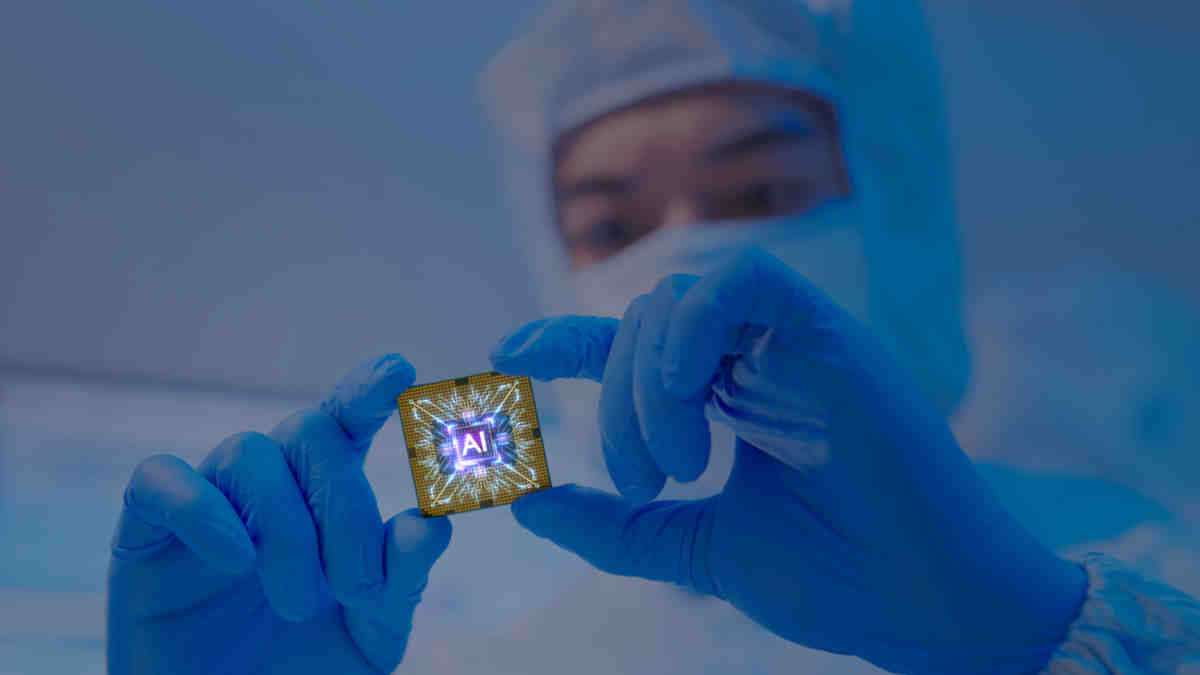As chip war heats up, could this ASX microcap rewire the future of semiconductors?
As the US and China battle for chip control, Adisyn has taken an early step toward solving one of the tech sector’s toughest problems.

Stockhead
Don't miss out on the headlines from Stockhead. Followed categories will be added to My News.
US and China battle for chip control
Adisyn targets chip bottleneck with graphene
Now comes the test: can it scale?
Computer chips are the unsung heroes of the digital age – tiny slivers of tech that punch far above their weight.
They're the engine under the hood of generative AI, and the reason your Tesla knows when to stop before it bumps into a wall. And without them, your iPhone is just a slick piece of glass and metal.
It’s why the US and China have locked horns in a high-stakes semiconductor standoff.
Washington’s strategy has been to starve Beijing of cutting-edge chips, and the tools to make them, hoping to slow China’s ambitions in AI, quantum computing and autonomous systems.
Both Biden and Trump understand that semiconductors are strategic assets, not just tech components.
Because in this race, the winner won’t just lead in technology. They’ll set the terms for the next century.
No chips, no future factories
More and more, this race will also be about who runs the factory floor.
When your robots can build a ship with the precision of a watchmaker, or pump out EVs faster than you can blink, you’re practically running tomorrow’s economies and potentially... steering the whole next industrial revolution.
Mastering AI also means you can predict demand before the consumers even know what they want.
This predictive ability can push manufacturing efficiency to a place it’s never been. That kind of foresight doesn’t just win markets, it locks them down.
But this now brings us to a stark reality: countries aspiring to lead in manufacturing must secure access to next-generation chips.
No next-gen chips means no robots, and no automated assembly lines.
But there’s a big problem here: the world is standing at the edge of a cliff in terms of our chip design.
The industry has been riding Moore’s Law for decades, i.e. shrinking transistors and packing more power into smaller spaces.
But the tiny copper wires (called interconnects) that link these transistors are hitting their physical limits.
As chips get denser, copper's resistance and heat generation become bottlenecks, threatening to stall progress.
The interconnect dilemma
Kevin Crofton, recently appointed non-executive chairman of ASX-listed Adisyn (ASX:AI1), knows this problem better than most.
With a career spanning work at Lam Research, KLA, and Newport, he’s helped guide some of the world’s top semiconductor manufacturers.
Crofton points out that everything from autonomous cars and advanced robotics to medical tech, banking systems and cloud data centres will all rely on faster and more powerful chips.
“These phenomena drive chip circuit designs measured in nanometres (10s of atoms) in width, pushing standard manufacturing methods and the use of standard materials, copper, to their limits,” Crofton explained.
This leads to what the industry has dubbed the “interconnect dilemma”, and it’s a major hurdle for progress.
The hotter these copper pathways get, the more performance you lose. And no matter how small your transistors, they’re only as fast as what connects them.
There might be a way off this cliff, though, if someone can crack it.
For years, researchers have been eyeing graphene as a possible lifeline.
This one-atom-thick wonder material is stronger than steel, conducts electricity better than copper, and doesn’t heat up like a toaster when you push it hard.
Adisyn cracks the heat barrier on graphene
The problem, though, has always been that producing graphene requires temperatures well over 1000°C – far beyond what standard chip factories can handle.
So, the idea’s mostly been science fiction.
Until now.
Back in January, Adisyn acquired Israeli startup 2D Generation (2DG), led by Arye Kohavi, the man who once made water out of thin air with his startup, WaterGen.
Kohavi and his team at 2DG have figured out how to grow graphene at under 365 degrees Celsius, cool enough for current chip factories to handle without turning everything to slag.
And that’s a game-changer.
This technology, Crofton believes, could eventually replace copper in the wiring inside chips.
It could, he added, open the door for chipmakers to move into sub-nanometre designs, pushing performance well beyond today’s limits.
“In other words, we could unlock the ability to achieve an order of magnitude higher performance on even the most advanced chips going into production today.”
Scaling the “recipe”
But big breakthroughs don’t count until they scale. And Crofton’s not making promises he can’t prove.
“The straight answer is that we don’t know, yet,” he admits, when asked how scalable the process is. “We believe that it is imminently scalable, but we need to prove it.”
This next phase of Adisyn/2DG’s journey is, in fact, to address that exact question.
“On first principles, we’ve proven that we can deposit high quality graphene at low temperature, albeit on isolated areas on a surface right now.
“We also know that this has never been done before, especially not in the semiconductor industry.”
The mission for Adisyn now is to demonstrate full coverage of high quality/low temperature graphene on 1cmx1cm coupons, and understand that entire process window, or what it calls the “recipe”.
“We have confidence that the eventual process window will prove scalability and efficacy across a broad range of semiconductor devices.”
Crofton also believes the geopolitical situation has little to no impact on the company or its strategy going forward.
“We are not making manufacturing equipment, and are not using controlled technology that would be affected by the whims of the nation states.”
At Stockhead we tell it like it is. While Adisyn is a Stockhead advertiser, it did not sponsor this article.
Originally published as As chip war heats up, could this ASX microcap rewire the future of semiconductors?






